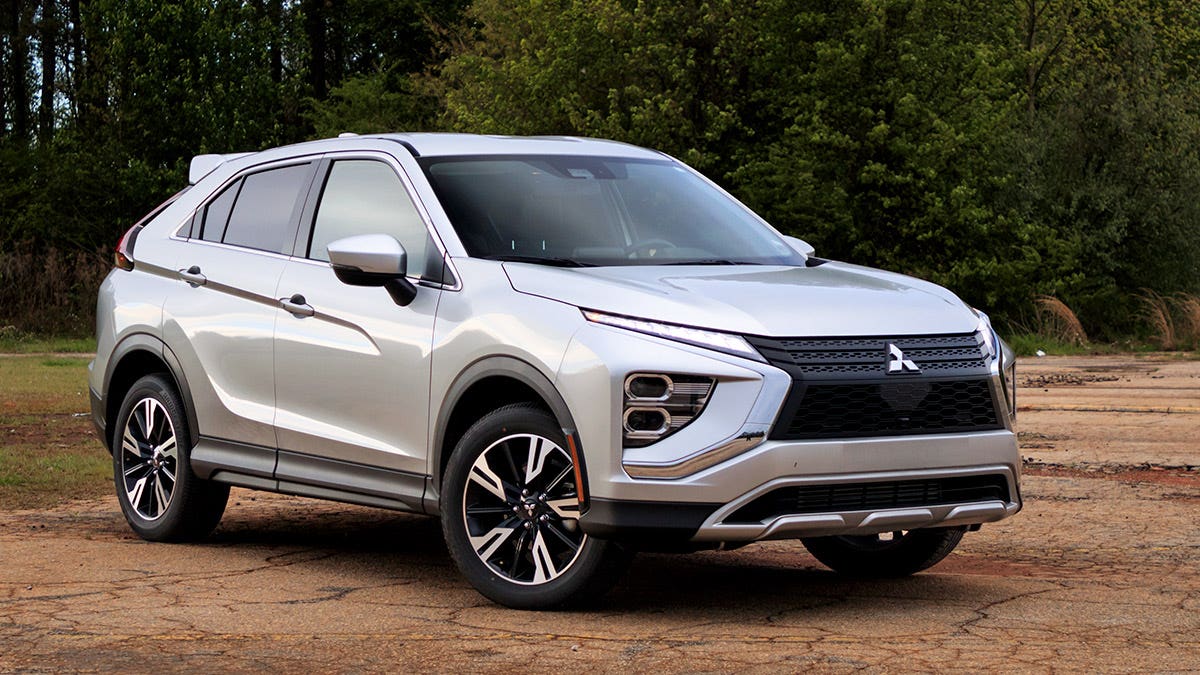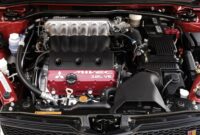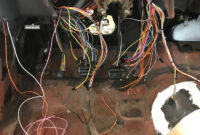Understanding Mitsubishi’s warranty coverage and service plans – Understanding Mitsubishi’s warranty coverage and service plans is crucial for any owner. This guide unravels the mysteries behind Mitsubishi’s various warranty types – from bumper-to-bumper to powertrain – detailing their durations, mileage limits, and what’s
-actually* covered. We’ll also delve into the often-confusing world of service plans, comparing costs, coverage, and benefits to help you make the best choice for your vehicle.
Get ready to become a warranty whiz!
Beyond the basics, we’ll explore common warranty exclusions, the importance of regular maintenance, and how to navigate the process of filing a claim. We’ll even cover transferring your warranty to a new owner and tackling common warranty disputes. Consider this your ultimate survival guide to maximizing your Mitsubishi ownership experience.
Mitsubishi Warranty Types

Understanding the specifics of your Mitsubishi’s warranty is crucial for protecting your investment. Knowing what’s covered and for how long can save you significant expenses down the line. This section breaks down the different warranty types offered by Mitsubishi, clarifying their durations and coverage limitations.Mitsubishi typically offers several key warranty types, each with its own terms and conditions.
These vary slightly depending on the model year and specific vehicle, so always refer to your owner’s manual or contact your dealership for the most accurate and up-to-date information. However, a general understanding of these common types provides a solid foundation.
Basic Warranty Coverage
The basic warranty, often referred to as a bumper-to-bumper warranty, covers a wide range of components and systems in your vehicle. This typically includes everything from the engine and transmission to the electrical system and air conditioning. It’s the most comprehensive warranty offered, protecting against manufacturing defects. The duration and mileage limitations vary by model year and may range from 36 months/36,000 miles to a longer period, but always check your specific vehicle documentation.
Powertrain Warranty Coverage
The powertrain warranty focuses specifically on the major mechanical components responsible for moving the vehicle. This typically includes the engine, transmission, and drive axles. While less comprehensive than the bumper-to-bumper warranty, it still provides significant protection against costly repairs. Powertrain warranties generally extend beyond the basic warranty’s duration, often offering coverage for a longer period, like 60 months or 60,000 miles.
Again, consult your owner’s manual for precise details.
Emissions Warranty Coverage
The emissions warranty covers components related to your vehicle’s emission control system. This ensures your car meets environmental regulations and helps prevent costly repairs related to pollution control. This warranty typically lasts for a longer period, often exceeding the bumper-to-bumper warranty’s timeframe, and might cover up to 8 years or 80,000 miles, depending on the specific component and applicable legislation.
State and federal emissions regulations play a significant role in determining the specifics of this warranty.
Warranty Comparison Table
Understanding the differences between these warranties is best done with a clear comparison. The table below summarizes the key features of each. Remember, these are general guidelines, and the specific details will be found in your vehicle’s warranty documentation.
| Warranty Type | Duration | Mileage | Coverage Details |
|---|---|---|---|
| Bumper-to-Bumper | 36-60 Months (Variable by Model Year) | 36,000-60,000 Miles (Variable by Model Year) | Covers most vehicle components against manufacturing defects. |
| Powertrain | 60 Months or 60,000 Miles (Typical, but varies by model year) | 60,000 Miles (Typical, but varies by model year) | Covers engine, transmission, and drive axles. |
| Emissions | 8 Years or 80,000 Miles (Typical, but varies by model year and component) | 80,000 Miles (Typical, but varies by model year and component) | Covers emission control system components. |
Understanding Warranty Exclusions: Understanding Mitsubishi’s Warranty Coverage And Service Plans
Mitsubishi warranties, while comprehensive, don’t cover everything. Understanding what’s excluded is crucial to avoid unexpected repair costs. This section details common exclusions and circumstances that can void your warranty. Knowing these limitations will help you maintain your vehicle and protect your investment.Knowing the specifics of what’s not covered under your Mitsubishi warranty is vital. Failure to understand these exclusions can lead to costly out-of-pocket expenses for repairs.
This section provides clarity on common exclusions and situations that might invalidate your warranty coverage.
Commonly Excluded Repairs
Many factors can lead to a repair not being covered under your Mitsubishi warranty. These typically fall under categories like normal wear and tear, misuse, or lack of proper maintenance. Let’s examine some common examples.
For instance, tire wear, brake pad replacement, and wiper blade changes are generally considered normal wear and tear and are not covered. Similarly, damage resulting from accidents, collisions, or improper use of the vehicle is typically excluded. Neglecting scheduled maintenance, as Artikeld in your owner’s manual, can also void or limit warranty coverage.
Circumstances that Void Warranty Coverage
Specific actions or events can invalidate your Mitsubishi warranty. These often involve modifications to the vehicle or a failure to adhere to the manufacturer’s maintenance schedule.
Modifying your vehicle’s engine or installing aftermarket parts not approved by Mitsubishi can often void the warranty. This includes performance enhancements that might stress the vehicle’s components beyond their designed capabilities. For example, installing a turbocharger on a naturally aspirated engine without proper modifications and approvals would likely void your warranty if engine failure resulted.
Another critical factor is adhering to the recommended maintenance schedule. Skipping routine services like oil changes or neglecting to address minor issues promptly can lead to larger problems down the line, which might not be covered under warranty. Consistent maintenance demonstrates responsible vehicle ownership and helps maintain the vehicle’s integrity.
Examples of Uncovered Repairs
Let’s look at specific scenarios where warranty coverage might be denied. These examples illustrate the importance of understanding the terms and conditions of your warranty.
Imagine a scenario where a customer neglects regular oil changes. This leads to engine damage due to sludge buildup. Mitsubishi is unlikely to cover this costly repair as it directly resulted from a failure to follow the recommended maintenance schedule. Similarly, if a vehicle is involved in an accident and sustains significant damage, the repairs are unlikely to be covered under the warranty.
The accident itself is an excluded event.
Another example: A customer installs an aftermarket stereo system, which inadvertently damages the vehicle’s electrical system. This repair would not be covered under warranty, as the damage stemmed from an unauthorized modification. Therefore, always check with your dealer before making any modifications to your vehicle.
Mitsubishi Service Plans
Choosing the right service plan for your Mitsubishi vehicle can significantly impact your ownership experience, offering peace of mind and potentially saving you money on maintenance costs over time. Mitsubishi offers a range of service plans designed to cater to different needs and budgets, each with its own set of benefits and limitations. Understanding these differences is crucial to making an informed decision.Mitsubishi’s service plans typically cover routine maintenance tasks, offering varying levels of protection against unexpected repair expenses.
These plans often include scheduled maintenance like oil changes, tire rotations, and filter replacements. The extent of coverage, however, varies depending on the specific plan chosen, influencing the overall cost and the duration of protection. Careful consideration of your driving habits, budget, and the age of your vehicle will help determine the most suitable option.
Mitsubishi Service Plan Options
Mitsubishi’s service plans are designed to provide comprehensive coverage for routine maintenance, but the specifics vary. The plans typically fall into categories based on the duration of coverage and the type of maintenance included. Some plans may cover only scheduled maintenance, while others may offer broader protection against unexpected repairs. Factors such as vehicle age and mileage may also influence plan availability and pricing.
Understanding Mitsubishi’s warranty coverage and service plans is crucial before buying, especially when comparing models like the Triton. To make an informed decision, check out this Detailed comparison of Mitsubishi Triton vs Toyota Hilux for a comprehensive overview. This will help you weigh the warranty against features and ultimately decide if the Mitsubishi’s service plans align with your needs.
It’s advisable to contact your local Mitsubishi dealership for the most up-to-date information on available plans and pricing in your area.
Comparison of Mitsubishi Service Plans
To illustrate the differences, let’s consider two hypothetical service plans: “Silver” and “Gold.” The “Silver” plan might cover basic maintenance for three years or 36,000 miles, whichever comes first, encompassing oil changes, tire rotations, and filter replacements. The “Gold” plan, on the other hand, could extend coverage to five years or 60,000 miles, encompassing all the “Silver” plan features plus additional services like brake pad replacements and other wear-and-tear items.
Naturally, the “Gold” plan would command a higher upfront cost but could result in significant savings over the long run, especially if unexpected repairs arise.
Key Features of Mitsubishi Service Plans
Understanding the key features of each plan is essential for a sound decision. The following bullet points highlight the potential inclusions and variations you might encounter:
- Plan Duration: This refers to the length of time the plan remains active, typically measured in years or miles. Some plans might offer shorter durations (e.g., 2 years/24,000 miles), while others might extend to longer periods (e.g., 5 years/60,000 miles).
- Covered Services: Each plan will specify the maintenance tasks included. Basic plans usually cover routine services such as oil changes and tire rotations. More comprehensive plans may incorporate additional services like brake pad replacements, fluid flushes, and other wear-and-tear items.
- Cost: The price of a service plan will vary depending on the duration of coverage and the extent of services included. More comprehensive plans with longer durations will typically be more expensive upfront.
- Transferability: Some plans might allow for the transfer of coverage to a new owner if the vehicle is sold during the plan’s active period. However, this is not always the case, so check the plan details carefully.
- Exclusions: All plans will have exclusions, such as damage resulting from accidents or misuse. It’s crucial to understand what is and isn’t covered to avoid unexpected expenses.
Accessing Warranty and Service Information
Navigating the world of car warranties can feel overwhelming, but understanding how to access your Mitsubishi warranty information and file a claim is crucial for protecting your investment. This section details the various methods available to obtain the necessary information and Artikels the straightforward process for submitting a warranty claim.Accessing your Mitsubishi warranty information is surprisingly simple. Several avenues exist, allowing you to find the information you need quickly and efficiently.
Locating Warranty Information in Vehicle Documentation
Your Mitsubishi’s warranty information is readily available within the vehicle’s documentation package. This typically includes a comprehensive owner’s manual and separate warranty booklets. The warranty booklet will specify the exact terms and conditions of your coverage, including the duration, what’s covered, and what’s excluded. Look for a section clearly labeled “Warranty Information” or something similar. The booklet might also contain a registration card that you’ll need to complete and return to Mitsubishi.
Carefully reviewing this documentation is the first step in understanding your rights and responsibilities.
Accessing Warranty Information Online
Mitsubishi likely offers an online portal where you can access warranty information and track the status of any claims. This online portal might require registration using your vehicle identification number (VIN) and other relevant details. Once registered, you can view your warranty details, download relevant documents, and even schedule service appointments. This online method offers a convenient and readily accessible alternative to traditional methods.
Contacting a Mitsubishi Dealership
If you’re unable to locate your warranty information or encounter difficulties accessing the online portal, contacting your local authorized Mitsubishi dealership is always an option. Dealership staff are trained to assist with warranty-related inquiries and can provide clarification on any aspect of your coverage. They can also help guide you through the claim process if needed. Simply contact the dealership’s service department and explain your situation; they will assist you in accessing your information.
Filing a Warranty Claim
Filing a warranty claim usually involves several steps. First, you’ll need to contact your authorized Mitsubishi dealership. You will likely need to provide your VIN, a description of the issue, and supporting documentation, such as photos or videos of the problem. The dealership will assess the situation and determine whether the repair falls under the terms of your warranty.
If it does, they’ll proceed with the repair. If the issue is not covered, they will explain the reasons why and Artikel any alternative options. Remember to keep all records of your communications and the repair process.
Maintenance and Warranty Implications
Keeping your Mitsubishi vehicle in top condition isn’t just about smooth driving; it’s crucial for maintaining your warranty coverage. Regular maintenance demonstrates your commitment to the vehicle’s upkeep, directly impacting your ability to make successful warranty claims should something go wrong. Neglecting scheduled maintenance can significantly weaken your position if you need to rely on your warranty.Regular maintenance plays a pivotal role in preserving your Mitsubishi’s warranty.
Think of it as a partnership: you maintain the vehicle according to the manufacturer’s recommendations, and Mitsubishi stands by its commitment to repair or replace covered components. However, if you fail to uphold your end of this implied agreement, your warranty coverage can be compromised. This doesn’t mean a single missed oil change automatically voids your warranty, but a consistent pattern of neglect can lead to warranty claims being denied, especially if the issue is related to a system that should have been proactively maintained.
Recommended Maintenance Procedures for Warranty Validity
Maintaining a consistent maintenance schedule is key to preserving your warranty. This involves more than just following the mileage intervals; it also includes adhering to the recommended service intervals specified in your owner’s manual. Failing to do so can result in the manufacturer deeming the damage to be the result of neglect rather than a manufacturing defect, potentially leading to warranty claim denials.
- Regular Oil Changes: Following the recommended oil change intervals as specified in your owner’s manual is crucial. Using the correct type and grade of oil is also essential. Ignoring this can lead to engine damage, which might not be covered under warranty if it’s deemed to be a result of improper maintenance.
- Fluid Checks and Top-Ups: Regularly checking and topping off fluids like coolant, brake fluid, power steering fluid, and transmission fluid is vital. Low fluid levels can cause damage to various components, and if this damage is attributed to negligence, your warranty claim might be rejected.
- Tire Rotation and Balancing: Uneven tire wear can cause premature tire damage and potentially affect other suspension components. Regular tire rotations and balancing, as recommended in your owner’s manual, help prevent this and ensure your warranty remains intact.
- Filter Replacements: Replacing air filters, cabin air filters, and fuel filters at the recommended intervals is essential for optimal engine performance and longevity. Neglecting this can lead to reduced performance and potential engine problems, which may not be covered under warranty.
- Brake Inspections: Regular brake inspections are crucial for safety and to prevent more extensive brake system problems. Ignoring brake issues can lead to expensive repairs that might not be covered by the warranty if they are a result of delayed maintenance.
Remember, keeping detailed records of all maintenance performed is crucial. Should a warranty claim arise, these records serve as proof that you have diligently followed the manufacturer’s recommendations. This documentation significantly increases the likelihood of a successful warranty claim.
Dealer Network and Service

Finding the right service center is crucial for a smooth warranty experience. Mitsubishi’s extensive dealer network ensures accessibility for owners across the country, offering convenient locations and specialized technicians trained to handle all aspects of Mitsubishi vehicle maintenance and repairs. Understanding the role of the dealership in warranty claims is key to a successful resolution.Locating an authorized Mitsubishi service center is straightforward.
The official Mitsubishi Motors website typically features a dealer locator tool. This tool allows users to input their zip code or address to quickly identify nearby dealerships. Alternatively, a simple online search using terms like “Mitsubishi service center near me” will also yield relevant results. Many dealerships also have dedicated service departments with specific contact information readily available on their individual websites.
This allows customers to schedule appointments and inquire about service options in advance.
Understanding Mitsubishi’s warranty coverage is crucial, especially when considering regular maintenance. Knowing what’s covered can help you budget effectively, and sometimes even DIY repairs like brake pad changes are necessary. For a detailed walkthrough on tackling this yourself, check out this handy guide: Step-by-step guide to changing Mitsubishi L200 brake pads. This knowledge, combined with a thorough understanding of your warranty, ensures your Mitsubishi stays in top shape for years to come.
Mitsubishi Dealership Role in Warranty Repairs
Mitsubishi dealerships are the primary point of contact for warranty repairs. They are responsible for assessing the vehicle’s condition, diagnosing the issue, ordering necessary parts (if covered under warranty), and performing the repairs according to Mitsubishi’s specifications. Dealerships have access to the manufacturer’s repair manuals and diagnostic tools, ensuring repairs are carried out correctly and efficiently. The dealership acts as an intermediary between the customer and Mitsubishi Motors, handling the warranty claim process and ensuring the repair is covered under the terms of the warranty.
Proper documentation and communication with Mitsubishi are crucial elements of this process. Dealerships often maintain detailed records of all repairs and service performed, which can be beneficial for future warranty claims or general vehicle maintenance tracking.
Positive Warranty Claim Scenario, Understanding Mitsubishi’s warranty coverage and service plans
Imagine Sarah, a proud owner of a new Mitsubishi Outlander, notices a persistent rattling noise emanating from her vehicle’s engine. Remembering her warranty coverage, she contacts her local Mitsubishi dealership via their website’s online scheduling system. She describes the issue and schedules an appointment for a diagnostic check. Upon arrival, a service advisor greets Sarah promptly and thoroughly documents her concerns.
The technician performs a comprehensive diagnostic test, identifying a faulty component covered under her warranty. The dealership orders the replacement part directly from Mitsubishi and completes the repair within a reasonable timeframe. Throughout the process, Sarah receives regular updates from the service advisor. The repair is completed successfully, the rattling noise is gone, and Sarah’s experience is overwhelmingly positive due to the dealership’s professionalism, transparency, and efficient handling of her warranty claim.
This scenario exemplifies the ideal customer interaction with a Mitsubishi service center during a warranty claim.
Warranty Transferability
Transferring a Mitsubishi warranty to a new owner isn’t always a straightforward process, and its feasibility depends largely on the specific type of warranty and the terms Artikeld in your contract. Understanding the conditions and procedures involved is crucial for a smooth transition of ownership. This section clarifies the process and details what you need to know.Mitsubishi warranties, like many others, aren’t automatically transferable.
The transferability clause, if any, is usually specified within the warranty document itself. Factors like the remaining warranty period, the vehicle’s condition, and any outstanding service obligations can influence whether a transfer is possible and what fees might be involved. It’s vital to check the fine print!
Conditions for Warranty Transfer
The possibility of transferring a Mitsubishi warranty hinges on several key factors. Firstly, the warranty must be still valid; a warranty that has expired is, naturally, not transferable. Secondly, the vehicle must meet specific conditions. This might include limitations on mileage or any damage sustained that violates the warranty terms. Finally, and critically, the warranty itself must explicitly state that it is transferable.
Not all Mitsubishi warranties offer this option. Always review your warranty documentation for details on transferability.
Fees and Procedures Involved in Warranty Transfer
While some manufacturers offer straightforward warranty transfers, others might charge a fee to process the change of ownership. This fee, if applicable, will typically cover the administrative costs associated with updating the warranty records. Additionally, the transfer process might require specific documentation, such as proof of purchase for the new owner, and possibly a vehicle inspection to confirm its condition aligns with the warranty terms.
These procedures are designed to ensure the integrity of the warranty program.
Step-by-Step Guide to Transferring a Mitsubishi Warranty
To successfully transfer a Mitsubishi warranty, follow these steps:
- Review your warranty documentation: Carefully examine your warranty booklet to determine if the warranty is transferable and identify any specific requirements or restrictions.
- Contact your Mitsubishi dealer: Initiate contact with a Mitsubishi dealership to inquire about the warranty transfer process and any associated fees. Provide them with your vehicle’s VIN and other relevant information.
- Gather necessary documentation: Prepare all the required documents, including the original warranty booklet, proof of purchase for both the original and new owner, and the vehicle’s title. A vehicle inspection might also be necessary.
- Complete the transfer paperwork: The dealership will provide the necessary paperwork to formally transfer the warranty. Complete this paperwork accurately and thoroughly.
- Pay any applicable fees: Pay any associated transfer fees as determined by the dealership.
- Receive confirmation: Once the transfer is complete, obtain written confirmation from the dealership, ensuring all details are correct.
Remember, this is a general guideline, and the specific steps and requirements might vary depending on the dealership and the specific terms of your warranty. Always confirm directly with your Mitsubishi dealership for precise instructions.
Common Warranty Issues and Resolutions
Navigating warranty claims can sometimes feel like traversing a minefield, especially when dealing with complex automotive warranties. Understanding common problems and effective resolution strategies is crucial for a smoother experience. This section will Artikel frequently encountered warranty issues with Mitsubishi vehicles and provide practical steps to resolve disputes effectively.
While Mitsubishi strives for high-quality manufacturing, certain issues can arise. These often relate to specific components or systems, and understanding the terms of your warranty is vital in resolving these issues. Remember, proactive communication and documentation are key to a successful outcome.
Common Warranty Claim Problems
Several recurring problems appear in Mitsubishi warranty claims. These include issues with the engine, transmission, electrical systems, and air conditioning. Problems may also stem from misunderstandings regarding what is and isn’t covered under the warranty.
Strategies for Resolving Warranty Disputes
Effective dispute resolution starts with clear communication. Begin by carefully reviewing your warranty documentation to understand the terms and conditions. Gather all relevant information, including your vehicle’s maintenance records, purchase date, and detailed descriptions of the problem. Contact your dealership’s service department first, explaining the situation calmly and thoroughly. If the dealership doesn’t resolve the issue to your satisfaction, escalate the complaint to Mitsubishi’s customer service department.
Keep detailed records of all communications, including dates, times, and the names of individuals you’ve spoken with. In persistent cases, consider consulting a consumer protection agency or legal professional.
Warranty Claim Resolution Table
| Problem | Solution | Relevant Warranty Clause | Contact Information |
|---|---|---|---|
| Engine Misfire | Contact your dealership for diagnostic testing and repair under the powertrain warranty. | Powertrain warranty covering engine components for a specified period. | Dealership service department; Mitsubishi Customer Service (phone number and website) |
| Transmission Malfunction | Schedule an appointment with your authorized Mitsubishi dealer for inspection and repair. Provide detailed information about the malfunction. | Powertrain warranty covering the transmission. Check the specific duration and mileage limitations. | Dealership service department; Mitsubishi Customer Service (phone number and website) |
| Electrical System Failure (e.g., malfunctioning headlights) | Report the issue to your dealer, providing specifics. If covered under the warranty, repairs should be provided. | Warranty clause covering electrical components. Check for exclusions related to modifications or misuse. | Dealership service department; Mitsubishi Customer Service (phone number and website) |
| Air Conditioning Issues | Document the problem with photos or videos if possible. Contact your dealer for diagnosis and repair under the applicable warranty section. | Warranty covering the air conditioning system, potentially limited to specific components or malfunctions. | Dealership service department; Mitsubishi Customer Service (phone number and website) |


